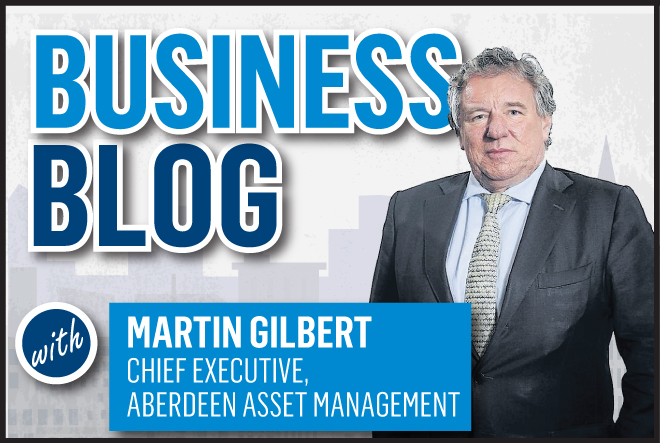The biggest annual gathering of senior figures from the financial and policy-making worlds takes place this week in Davos for the World Economic Forum (WEF) meeting. The sessions I’m very much interested in are on the topic of the Fourth Industrial Revolution.
The three previous industrial revolutions took place in the late 18th century (steam, water, mechanical production equipment), after 1870 (division of labour, electricity, mass production) and in the 1960s (electronics, IT, automated production).
The Fourth Industrial Revolution, often abbreviated as “Industry 4.0”, is a term originally coined in Germany to describe the coming era where new technology will allow humans to create sophisticated objects capable of allowing us to do more or do what we do more efficiently.
Just as mechanising the process of weaving allowed humans to produce much more than by hand, this new revolution will have a similar effect and the change is already happening. Consumers’ lives have been revolutionised by smartphones capable of giving us more information in our pockets than we could ever need. Meanwhile there is a veritable arms race in the car industry to create internet-connected vehicles which are more autonomous and can learn what we want of them.
This “Internet of Things” – where objects are connected to the internet to make the function they perform more useful – will have a fundamental impact on business and industry. It will change the method of production by making each step much more efficient and tailored to the end consumer. Factories always have times when their machines can’t operate because parts need changing. Imagine if the machines could communicate that this is going to happen, reduce the factory’s energy supply to allow for it and order the required new parts.
Klaus Schwab, founder and executive chairman of the World Economic Forum, has identified three ways in which Industry 4.0 will be different from previous industrial revolutions: speed, impact across many areas, and innovation of entire systems.
The change will create big opportunities for smart investors and fund managers. The challenge will be to identify sound enterprises that will maintain their agility and innovative instincts over the long term. For Aberdeen that means continuing to carry out rigorous in-house research into companies and their managers before investing in them and continuing to monitor them closely afterwards. It will change the industry too. New technology is giving us access to masses more data than we have ever had before, new ways of understanding that data and machines that can learn and make predictions from it. That will greatly speed up the pace of innovation as investment management companies compete to create products for clients which are far more tailored to what they specifically want.
But Industry 4.0 carries risks. Not least for IT and security in a world of ever greater interconnectivity. Data needs to be protected and businesses need to innovate or face becoming obsolete. This includes fund managers and is why we take our data protection very seriously and established an Innovation Committee to come up with and nurture new ideas about what we do. If anything, the hazards of Industry 4.0 will be aggravated in the financial services industry. Billions of pounds changes hands everyday through high-frequency trading programmes based on algorithms which involve very little human input. The algorithms mean that trades are made automatically when certain conditions are met. Unfortunately that means that rationality is marginalised and gives rise to very fast crashes in financial markets where a ripple effect spreads via algorithm. One such event came in the Flash Crash of 2010. It wiped $1 trillion off the value of US stocks in half an hour and amply demonstrated how much havoc a rogue algorithm in an interconnected world can inflict on markets.
Another challenge is what happens to the humans whose jobs have been replaced by that of a smarter machine. Policy-makers will need to change how they train people and what they train them for so they can take advantage of what this new technology offers people.
For, despite its many formidable challenges, we should see Industry 4.0 for what it is: the latest opportunity to create wealth, eliminate poverty and improve the human experience.
Klaus Schwab has posed the question: Will the Fourth Industrial Revolution have a human heart? I believe the answer is yes. Robots will become incredibly sophisticated, but ultimately they are no more than extensions of the human brain that created them. Algorithms can never be an adequate substitute for human ingenuity and leadership.
We will still need to recruit talented people, and organisations focused on the long term will grow their own talent, as we do at Aberdeen. I am confident that the challenging environment of the Fourth Industrial Revolution, like its three predecessors, will produce exceptionally gifted people to lead and develop it in a direction that will realise the WEF’s commitment to improve the state of the world.
